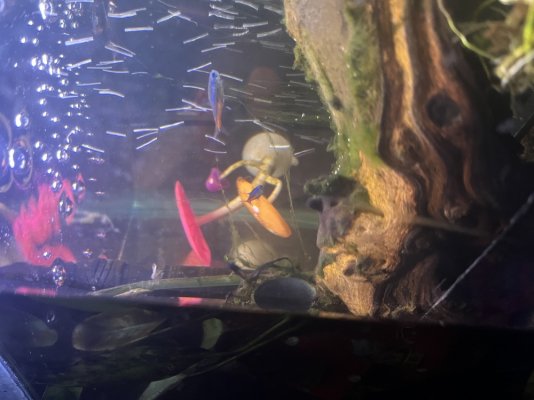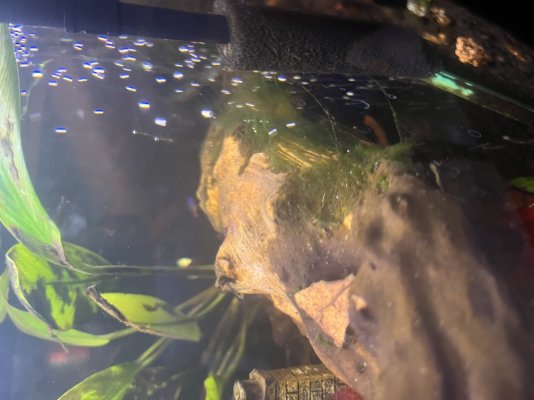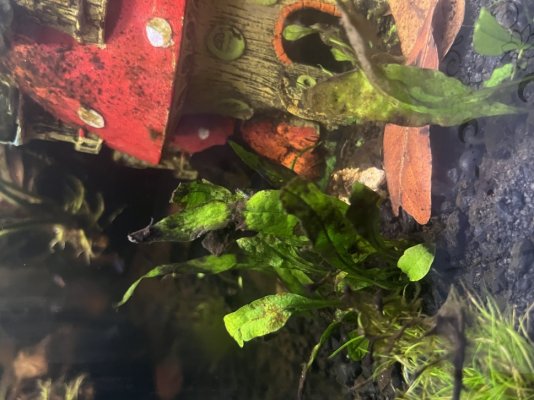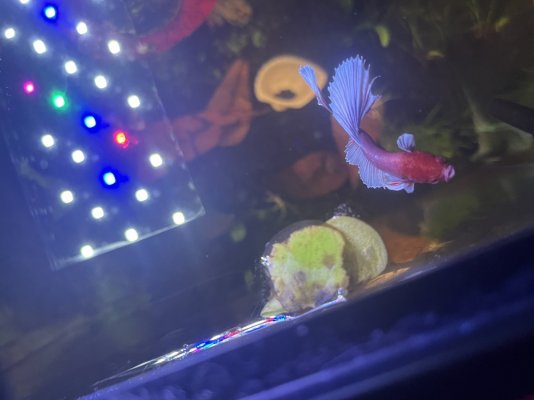Hello!
I’ve gotten Amazon frogbits a little while ago and they started to become translucent, separated into singles and scattered across the top of my tank. I also think I have two types of algae bloom and I don’t know what’s going on in my tank. The first one is like green, which makes strings going up (I think it’s hair algae?) and the second is black/brown that’s sitting on top of my plants. In regards to the nitrates, it keeps sitting at 50ppm.
Please help! How do I lower my nitrates? What is happening with my plants and how do I solve them?
I’ve tried adding more plants to lower nitrate, but should I increase the dosage of flourish to accommodate the lot? How do I know I won’t overdose my fish? I have my light running between 8-10 hours right now, but should I have it at exact 8 or 10? I know something isn’t balanced, but I don’t know what.
My tank is a 10gal,
75-77 degrees Fahrenheit,
I do 25-50% water changes weekly or biweekly,
I use flourish on Saturday,
Flourish excel every other day, excluding weekends,
0 ammonia & nitrite,
50ppm for hardness,
6.8-7.2pH.
5 Java ferns, 1 anubias, dwarf hair grass mini that hasn’t carpeted yet, the dying frogbits & Java moss
Not sure if it matters, but I also have a big mopani log,
4 cherry shrimp, 1 betta, & 4 neons.
(I want to go to 8, but I put in the neons a few days ago and I’m letting my tank do it’s thing before putting more)
I’ve gotten Amazon frogbits a little while ago and they started to become translucent, separated into singles and scattered across the top of my tank. I also think I have two types of algae bloom and I don’t know what’s going on in my tank. The first one is like green, which makes strings going up (I think it’s hair algae?) and the second is black/brown that’s sitting on top of my plants. In regards to the nitrates, it keeps sitting at 50ppm.
Please help! How do I lower my nitrates? What is happening with my plants and how do I solve them?
I’ve tried adding more plants to lower nitrate, but should I increase the dosage of flourish to accommodate the lot? How do I know I won’t overdose my fish? I have my light running between 8-10 hours right now, but should I have it at exact 8 or 10? I know something isn’t balanced, but I don’t know what.
My tank is a 10gal,
75-77 degrees Fahrenheit,
I do 25-50% water changes weekly or biweekly,
I use flourish on Saturday,
Flourish excel every other day, excluding weekends,
0 ammonia & nitrite,
50ppm for hardness,
6.8-7.2pH.
5 Java ferns, 1 anubias, dwarf hair grass mini that hasn’t carpeted yet, the dying frogbits & Java moss
Not sure if it matters, but I also have a big mopani log,
4 cherry shrimp, 1 betta, & 4 neons.
(I want to go to 8, but I put in the neons a few days ago and I’m letting my tank do it’s thing before putting more)




